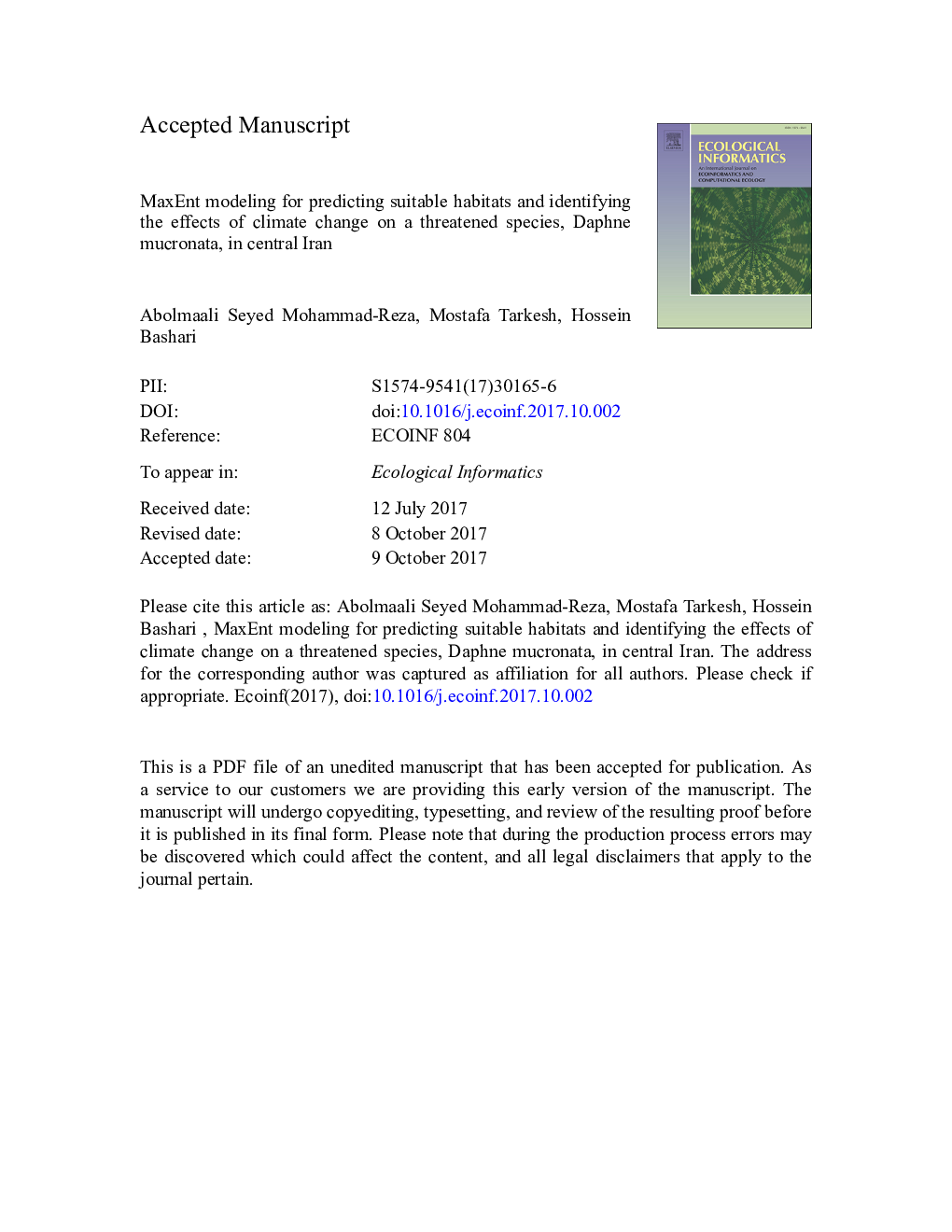| Article ID | Journal | Published Year | Pages | File Type |
|---|---|---|---|---|
| 8845872 | Ecological Informatics | 2018 | 28 Pages |
Abstract
Climate changes pose serious challenges to the persistence of plant species, especially those with narrow habitats. Failure to adopt timely measures would lead to the permanent loss of valuable endangered species. This study used maximum entropy to predict the geographical distribution of a medicinal and vulnerable plant species, Daphne mucronata Royle, under current and future climatic conditions (A2a/HadCM3) in central Iran. A total of 100 locations with the species occurrence were recorded. Three topographic variables (slope, elevation, and aspect) and 19 bioclimatic variables derived from monthly data (spatial resolution = 1 km) were used in the modeling process. The results showed that D. mucronata distribution was largely affected by elevation, annual precipitation, and precipitation of coldest quarter. According to species response curves, this species preferred habitats with mean precipitation of coldest quarter from 120 to 140 mm, annual precipitation of 240-280 mm, and elevation more than 2600 m above sea level. The climate change projection (A2a/HadCM3) indicated that by 2030 and 2080, D. mucronata would disappear in sites located below 2000 m, remain unchanged in elevations more than 3000 m, and undergo a drastic change in sites located at 2000-3000 m above sea level. This information is essential for conservation planners and rangeland managers who work on protecting the species from extinction. A similar approach can be adopted to identify sites with high extinction probability of endangered species and to protect susceptible habitats from the effects of climate change and future modifications.
Related Topics
Life Sciences
Agricultural and Biological Sciences
Ecology, Evolution, Behavior and Systematics
Authors
Seyed Mohammad-Reza Abolmaali, Mostafa Tarkesh, Hossein Bashari,
